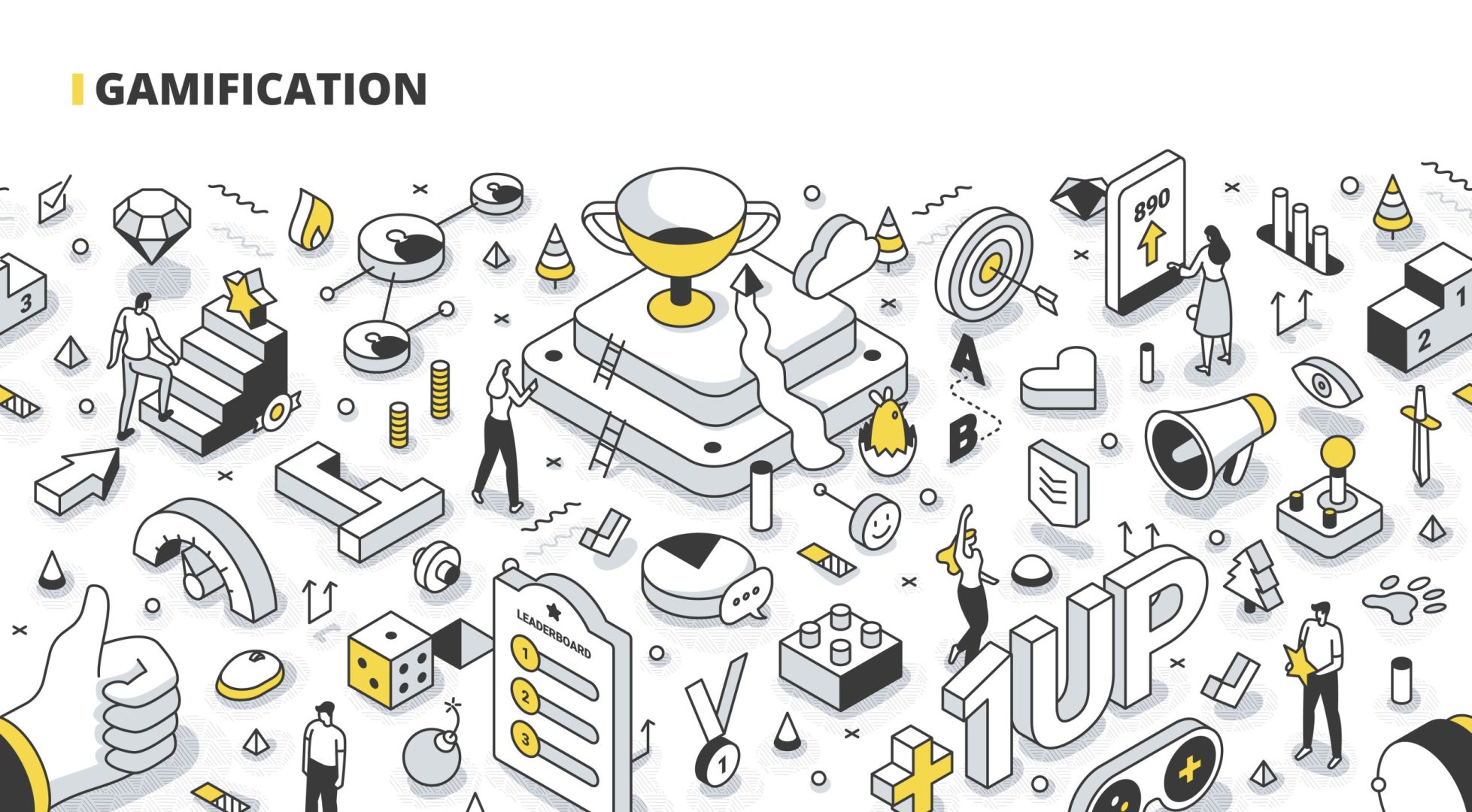There are four elements that should be incorporated into the design of learning experiences. These have in common that they can be addressed using various gamification methods.
Increasing learner engagement through gamification
Aspects of play and psychology are inherent in successful games. Gamified training modules can capture and maintain user interest by incorporating short, discrete puzzle-solving with a system of rewards and progress counters. By progressing from level to level, learners can unlock newer missions and climb the leaderboards, which in themselves generate additional engagement.
Internship opportunities
As with real work, practicing any given task improves performance. Various neuroscience and education research confirm the positive effects of practice over time. Engaging games keep learning activities at the front end of the learning curve and should present challenges that are demanding but not too difficult. Higher levels of play often combine previously mastered skills with new challenges. Training through gamification comes as a support for repeated practice with differentiated problems, which leads to increased competence and improves the transfer of information.
Evaluation
Continuous assessment should be incorporated into gameplay in the form of performance-based activities. In well-designed courses, assessment is continuous and measured by the player’s actions.
Feedback
Courses made through gamification should provide instant feedback on how the participant is doing. Positive results should occur once a learner applies the correct action. Conversely, negative consequences will result from incorrect or incomplete action. Providing a continuous state of awareness of the learner’s progress is one of the pillars of adaptive learning, and gamified courses should include this.
Benefits of gamification for eLearning platforms in organizations
The main benefit of gamification within an eLearning platform is to actively engage employees in completing tasks that may or may not be routine, but are so important to the successful operation of the company. Training using gamification elements reinforces the objective as well as the learning required to successfully complete employee tasks. Both learners (employees) and management can benefit from gamification.
Benefits of gamification for employees
- Higher engagement. Employees who take gamified training courses tend to become more engaged than those who take traditional seminar/class courses. Not only do participants pay more attention to the training, but they also participate more in the activities.
- Increased motivation. As elements that promote healthy competition, rewards and recognition often encourage participants to perform at their best during training. In addition, participation in gamified company activities facilitates the development of a stronger employee attachment to the company and its goals.
- Improved communication. Since some gamification activities require cooperation, training can improve communication among colleagues. Ongoing feedback also provides many opportunities for communication with trainers or training colleagues.
- Programme flexibility. Because gamified training is usually done at the pace and time of the employee’s choosing, there is minor or no need to rearrange the schedule to accommodate employees.
Choose mindclass today and transform the way your company trains its employees.
Get immediate access to e-learning courses (SCORM, H5P, games), video and audio files, interactive courses, gamification methods, and more. Request a demo here.





